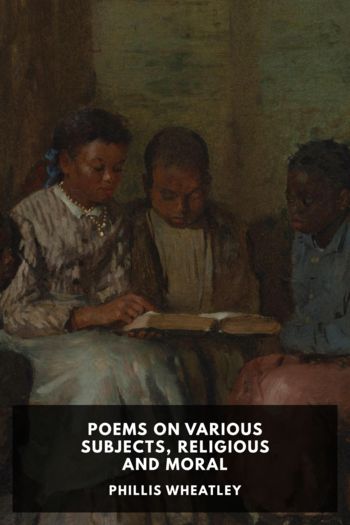Malaria and Rome: A History of Malaria in Ancient Italy, Robert Sallares [reading a book TXT] 📗

- Author: Robert Sallares
Book online «Malaria and Rome: A History of Malaria in Ancient Italy, Robert Sallares [reading a book TXT] 📗». Author Robert Sallares
² Livy 5.53.4: saluberrimos colles.
³ Livy 5.48.1–3: urgebat, Gallos pestilentia etiam, cum loco iacente inter tumulos castra habentes, (Pestilence was also affecting the Gauls, since their camp was situated in a place between hills.).
202
City of Rome
historical episodes, and this could be the reason why the Gallic sack of Rome apparently did little damage to the city, according to the results of recent archaeological research. Unfortunately no description of the symptoms is provided by Livy.⁴
Livy’s comments illustrate the close juxtaposition of healthy and unhealthy areas that was characteristic of malaria in Italy in the past. In the early modern period the incidence of malaria in the most densely populated districts of the city of Rome itself on the hills was also often described as relatively light. For example, Bonelli described ‘light malaria’ in the city of Rome in 1782. Bercé, writing about the sixteenth and seventeenth centuries , stated that ‘the city of Rome was not regarded as really dangerous, except for the hot months in some districts exposed to Tiber floods’.⁵
Nevertheless the description of how the cardinals, who assembled in the Vatican following the death of the pope on 8 July 1623 to elect a new one, were decimated by malaria by 6 August suggests that it was essential (especially for non-immune visitors) to be very careful indeed which districts of Rome they entered. Eight cardinals and thirty other officials died and numerous others became ill.
The new pope Urban VIII fled for his life from the Vatican to the Quirinal (61 metres above sea level), which was thought to be safer.
Subsequent papal elections were less lethal because of the increasing use of quinine, which was brought back to Rome in 1632 from South America in the bark of the cinchona tree by the Spanish priest Alonso Messias Venegas. It became popular after a successful trial in the Santo Spirito hospital in Rome organized by Cardinal Juan de Lugo in 1643.⁶
The artificial infection experiments at Horton Hospital in England demonstrated that by the twentieth century infections with Italian strains of P. falciparum required much larger doses of quinine for treatment than infections with African or Indian strains. This may be evidence for the evolution of a degree of resistance to quinine by P. falciparum strains in Italy between the seventeenth and the ⁴ About four years earlier, according to the annalistic tradition (Livy 5.31.5), a very hot and dry summer had caused disease and famine in the vicinity of Rome, preventing the Romans from sending out an army against Volsinii. This might be an even earlier malaria epidemic, but there is no description of the symptoms.
⁵ Bonelli (1966: map on pp. 678–9); Bercé (1989: 241): la ville de Rome n’était d’ailleurs pas réputée vraiment dangereuse, avec l’exception des mois chauds dans les quelques quartiers accessibles aux débordements du Tibre.
⁶ Celli (1933: 130); P. F. Russell (1955: 93).
City of Rome
203
28. Cardinal Juan de Lugo (1583–1660) orders the use of cinchona bark to treat patients with intermittent fevers. Reproduction of an oil painting by a Roman painter in the Ospedale di Santo Spirito in Rome. The Wellcome Library, London.
twentieth centuries.⁷ However, there were no effective remedies for malaria in Europe in antiquity. The papal election in 1623 demonstrates how devastating P. falciparum malaria sometimes was in Rome before the increasing use of quinine moderated its effects both in Rome in particular and more generally in Europe as a whole. The records of the Listae status animarum almae urbis Romae indicate a crude death rate for Rome of 43.1 per 1,000 in 1623, a bad year for malaria. This figure may be compared to the normal crude death rate of slightly over 30 per 1,000 estimated for Florence, a city unaffected by P. falciparum malaria, during the early seventeenth century by Cipolla, as an indication of the excess mortality that might be produced in Rome by an epidemic of malaria.⁸
⁷ Covel and Nicol (1951).
⁸ Schiavoni and Sonnino (1982: 107) record that the crude death rate in Rome in the pre-204
City of Rome
To understand the demographic evidence from the periods studied by Bercé and Bonelli for the purposes of comparison with the evidence of the ancient medical authors which will be considered shortly, it has to be remembered that the population of the city of Rome during those periods was very approximately an order of magnitude smaller than it was during the time of the Roman Empire. The Listae status animarum almae urbis Romae recorded a population of slightly more than 90,000 people at the end of the sixteenth century, perhaps very roughly a tenth of the population of imperial Rome.⁹ Consequently the lowlying, frequently flooded areas along the Tiber, in the valleys between the various hills, as well as the lower slopes of the hills, the most dangerous areas in terms of the risk of malaria and densely occupied during the time of the Roman Empire, had a much smaller human population during the periods studied by Bercé and Bonelli. The popes from Sixtus V
in the late sixteenth century onwards had instigated





Comments (0)